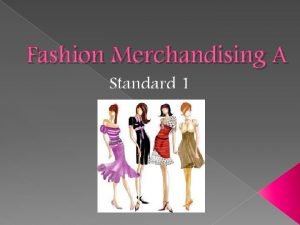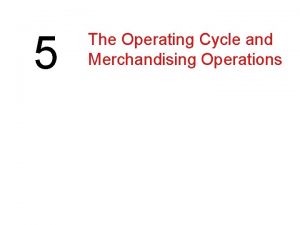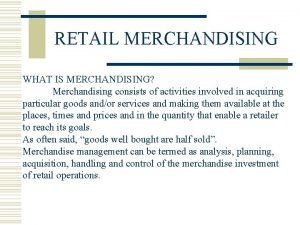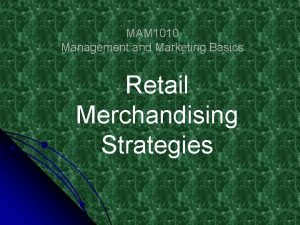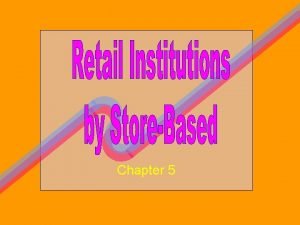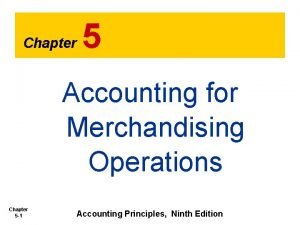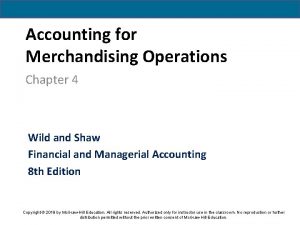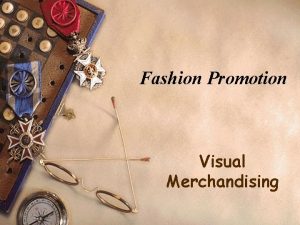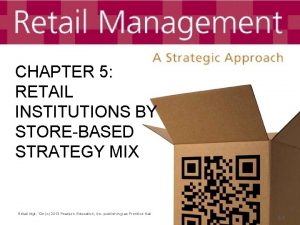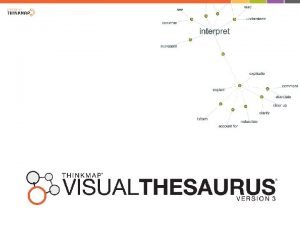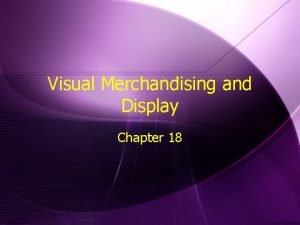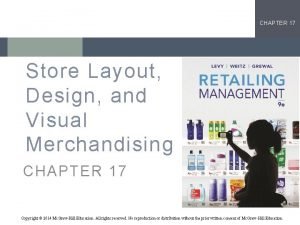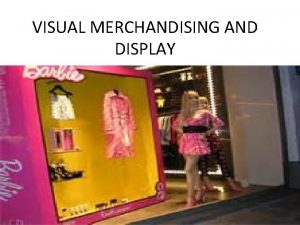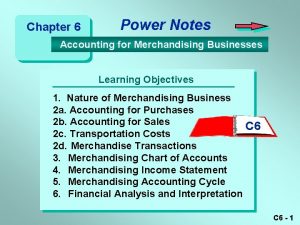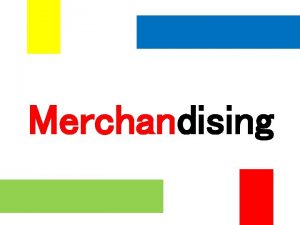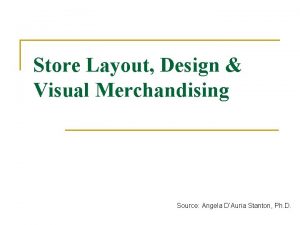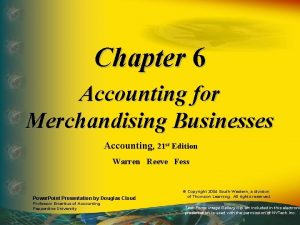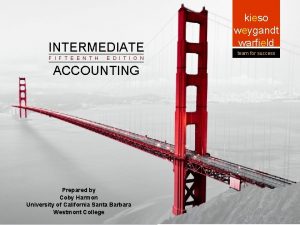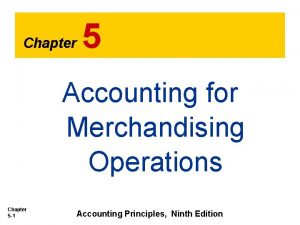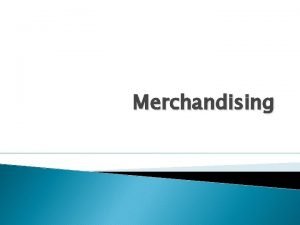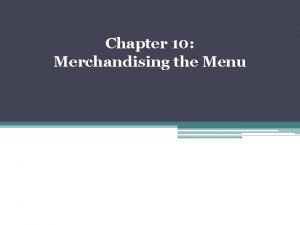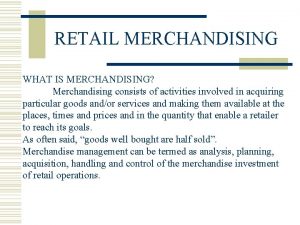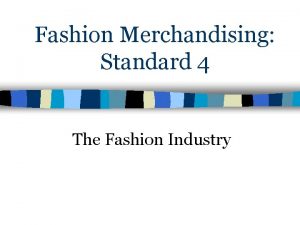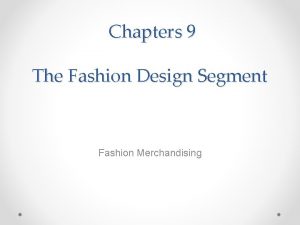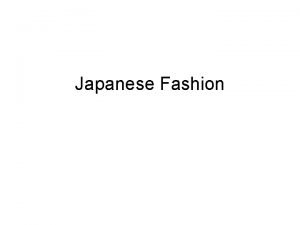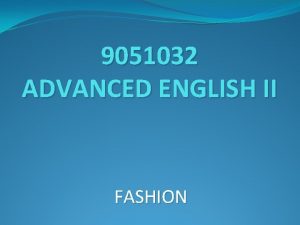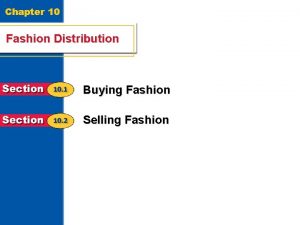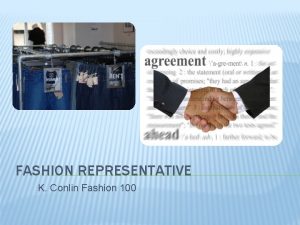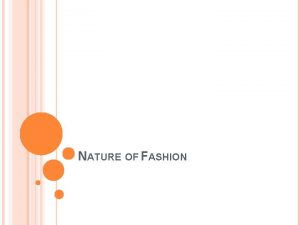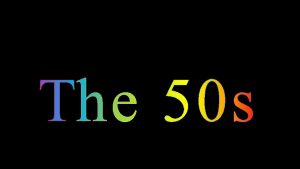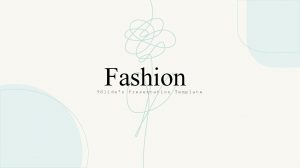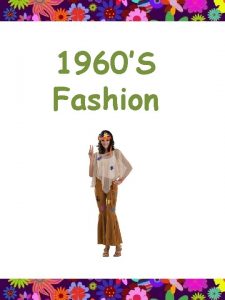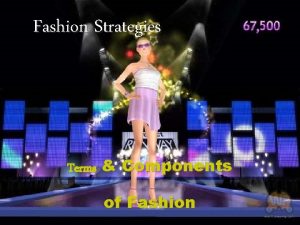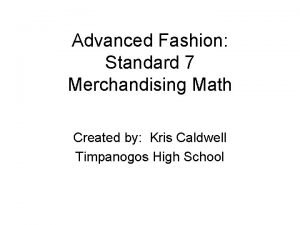Fashion Merchandising A Standard 1 Standard 1 What




















- Slides: 20

Fashion Merchandising A Standard 1

Standard 1 – What is Fashion? � Students will understand basic fashion concepts and terminology. › Objective 1 – Define Fashion Terms › Objective 2 – Identify Fashion Products › Objective 3 – Describe the Importance of Fashion

� Fashion is the existing type of clothing that is preferred by a large segment of the public at a given time. � Retailers view fashion as whatever is currently selling.

Apparel �Apparel is any or all men’s, women’s, and children’s clothing.

Garment �Garment: Any article of apparel, such as a dress, suit, coat, evening gown, or sweater.

Fashion Trend �Fashion Trend: The direction in which fashion is moving.

Silhouette � Silhouette: The shape of a clothing style. (If you squint your eyes and look at a clothing item, it is the shape you seeor outline)

�Fit: Fit to be the proper size and shape. �Fitted Garment: Shaped to follow the lines of the body.

High Fashion � High Fashion: The very latest and newest fashions. Usually of top quality and fine workmanship.

Avant-garde �Avant-garde: Clothes that are the most daring and wild designs.

Fad � Fad: A temporary, passing fashion. It is an item that has great appeal to many people for a short period of time.

�Classic: Classic A clothing item that continues to be popular even though fashions change.

Accessories � Accessories: Articles added to complete or enhance your outfits. Ex: belts, gloves, jewelry, shoes, hats, etc.

Style � Style is a particular shape or type of apparel item identified by the distinct features that make it unique. Examples – mini skirt, capri’s.

Design � Design: a particular or unique version of a style because of a specific arrangement of the basic design elements � 4 Elements of Design › › Color Line Shape Texture

Ready To Wear � Ready-To-Wear: Garments that are mass-produced in factories. Made to fit standard sizes.

� Fashion Cycle: the period of time or life span during which the fashion exists, moving through five stages. › › › Introduction Rise Peak Decline Obsolescence

� Haute Couture: (French) “finest dress making”. Refers to a group of “fashion houses”, each with a designer who creates original, individually designed fashions

� Fashion Products: Goods & Services Goods are intangible items that are made, manufactured, or grown. They include apparel, textiles, accessories, & other fashion products. � Services are intangible things that people do, such as tasks performed for customers.

The Importance of Fashion ves as a Fashion ser cord of e r l a ic r o t is h style, e f li & e r u lt cu an and can be what is f o r o t a ic d in a occurring in society at a e. particular tim Economic & political trends, current events, and social issues are often reflected in fashion. f the As one o tries ndus largest i orld, w e h t n i fects f a n o i h fas local global & s. ie econom Thr has ough ou p in p layed t hist o Ap erso an im ry, fa n p soc eara al ap porta shion nc n p i lev el o al pos e can earan t role abo f soc ition iden ce. tif affe ut a iety. At ppe , pe eve y cts ry op inte a s rac elf-es rance le ca tion re te a s w em & s it ith oth their ers. Fashion can be a reflection of the economic environment. In an era of war, or difficult economic times, clothing styles take on a more conservative style. In better economic times, when spirits are high, styles are more fun and adventurous.
 A particular or unique version of a style is a
A particular or unique version of a style is a Operating cycle of a merchandising company
Operating cycle of a merchandising company What is merchandising
What is merchandising Retail merchandising basics
Retail merchandising basics Risk of scrambled merchandising
Risk of scrambled merchandising Merchandise operations
Merchandise operations Chapter 4 accounting for merchandising operations
Chapter 4 accounting for merchandising operations Objetivo de merchandising
Objetivo de merchandising Visual merchandising objectives
Visual merchandising objectives Retail institutions by store-based strategy mix
Retail institutions by store-based strategy mix Visual merchandising synonym
Visual merchandising synonym Income statement merchandising
Income statement merchandising The physical outline of a display
The physical outline of a display Merchandising layout
Merchandising layout Types of interior displays
Types of interior displays A chart of accounts for a merchandising business usually
A chart of accounts for a merchandising business usually Merchandising que significa
Merchandising que significa Fixtures.qq
Fixtures.qq Chapter 6 accounting for merchandising businesses
Chapter 6 accounting for merchandising businesses Accrued wages
Accrued wages Accounting for merchandising operations
Accounting for merchandising operations
